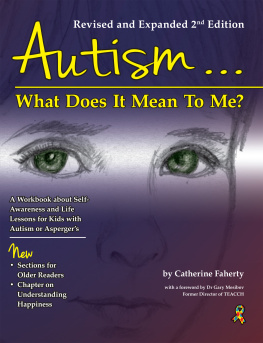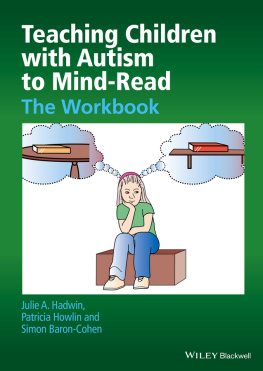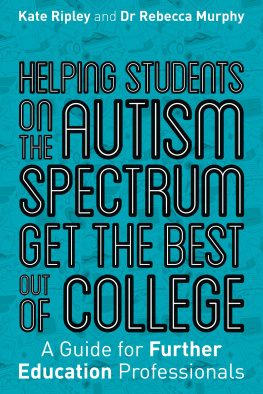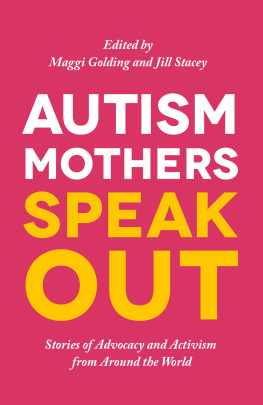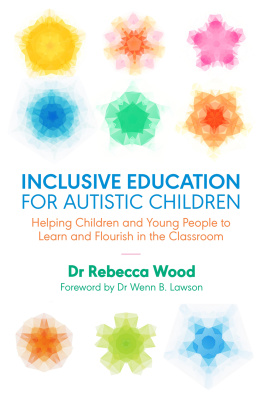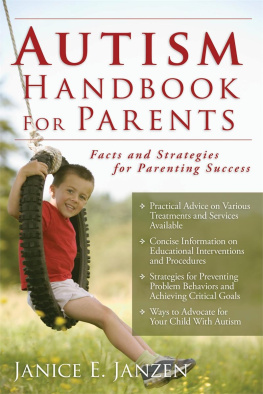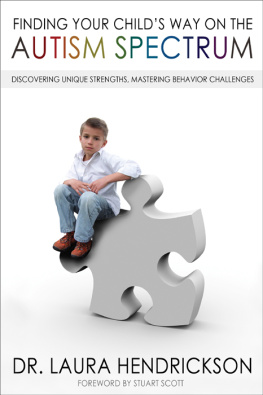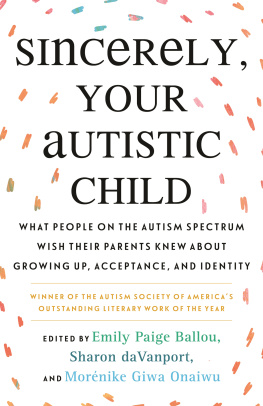Especially for Older Readers
The previous topics in this chapter are relevant when individually selected for older children, teenagers, andin some casesadults. Relevant supplementary information that is specifically for older readers can be found on the following pages.
This section provides information on and opportunities for self-awareness as related to the act of communication. It covers the reasons for communication, why it is valued, how to know when to communicate, miscommunication, the importance of honesty and kindness, asking for help, and self-advocacy.
It encourages the reader to embrace autism-friendly ways to communicate, as an alternative to talking in the moment if and when desired and to reassure the reader (and educate his or her typically developing communication partners) that it is perfectly okay to do so!
Parents, teachers, and therapists can simplify these topics to use with younger children, where indicated.
Whats the Big Deal about Communication?
It is commonly agreed that communication is important, but why is it so important?
Communication is often the first step in understanding one another. It is a way for people to connect with each other. In fact, it is considered to be one of the most important activities in which a person can participate, because it is a way to build connections with others and be a part of a community. No one really knows what thoughts are in someone elses mind or what feelings are in someones heart, unless the thoughts, ideas, or feelings are communicated.
Communication can help us understand one another. It is one of the factors that may contribute to a more peaceful life.
I will circle or highlight the ways in which I like to communicate:
Talking face to face with another person
Talking by phone
Writing and sending e-mails
Writing and mailing letters by post
Typing with someone on a tablet or computer
Using manual sign language
Drawing or painting
Creating comics for people to read
Making computer graphics
Playing a musical instrument
Writing song lyrics
Doing dance or creative movement
Writing stories or essays
Writing a blog
Other methods of expression: ________________________________
Other: ____________________________________________________
Miscommunication
To communicate effectively, I must talk to another person at a time when the other person is able to pay attention and listen carefully. Or, I may write what I want to say and make sure the person receives the message. But sometimes, it doesnt work perfectly. There may be a miscommunication.
What is a miscommunication?
When one person tries to communicate, but the other person is confused about what was said (or written), it is called a miscommunication .
How do I know if there is a miscommunication?
Here are some clues to detect if a miscommunication has happened:
If I said (or wrote) something, but the persons response is unexpected or doesnt make sense to me, there may be a miscommunication.
If the person gets angry or upset or expresses another emotion that is unexpected or doesnt make sense to me, there may be a miscommunication.
Generally, if something doesnt make sense during or after a conversation or if there is an unexpected response to what I have said (or written), it may mean there has been a miscommunication.
If someone says (or writes) to me that what I have communicated doesnt make sense, it means there is a miscommunication.
What Should I Do If There Is a Miscommunication?
After detecting there may be a miscommunication, a person may politely say (or write), I think there may be a miscommunication.
The next step could be one or both of these:
I can politely request that the speaker explain what he or she said. I may say, Please explain that again. This is an intelligent response to use when something doesnt make sense.
I can politely request of the speaker, Please write it down, so I can read what you are saying. This is also an intelligent response to use when something doesnt make sense.
Asking for more information in writing is an intelligent and responsible thing to do.
Sometimes, other people may say they dont understand what I am saying or what I mean. This is also an example of miscommunication. If someone asks me to explain it again, it means the listener needs more information to better understand what I mean.
It is intelligent and responsible to try to ask forand givemore information by talking or through writing.
How Do I Know If I Have Something to Communicate?
The reasons to communicate are divided into three general categories:
- One category consists of communication that expresses the need for a change to make things better.
- The second category consists of communication that expresses pleasure and gratitude about how things are.
- The third category consists of communication that shares information about ideas, thoughts, or feelings.
I will circle or highlight what is true for me.
There are times when I wish certain things would change for the better.
There are times when I like to share information about some of my ideas.
There are times when I like to share information about some of my thoughts.
There are times when I like to share information about some of my feelings.
There are times when I am glad that some things are the way they are.
Other: ____________________________________________________.
The First Category: Expressing the Need for a Change (for the better)
A person may notice inner feelings of discomfort or emotions, such as impatience, frustration, anger, sadness, fear, confusion, or another uncomfortable feeling.
Other physical sensations are sometimes clues about
emotions that signal the need for communication to
make things better. Examples of physical sensations
are feeling a fluttery or heavy feeling in the stomach,
having a stomachache or heaviness in the area of
the heart, the heart beating rapidly or hard, feeling
tightness in the throat, or having itching skin or
blushing or another physical sensation. Each individual
has his or her own physical reactions to discomfort,
confusion, and emotions.
When a person notices physical reactions in the body, it is a good time to ask oneself, Is something bothering me? or What is bothering me? Another important question to ask oneself is, What do I wish was different about this situation? Asking these questionsand answering them honestlyis a way to decide whether to communicate and what specifically may need to be communicated. It may mean its time to ask for help about something.
I will circle or highlight what is true for me.
Something is bothering me. It is:
I wish something would be different. It is:
I have something to communicate. It is:
I dont know if something is bothering me.
Sometimes I experience one of those physical sensations when I am in these locations or situations:
Sometimes I experience one of those physical sensations when I am near the following person or people:
Other: ____________________________________________________.
Other: ____________________________________________________.

